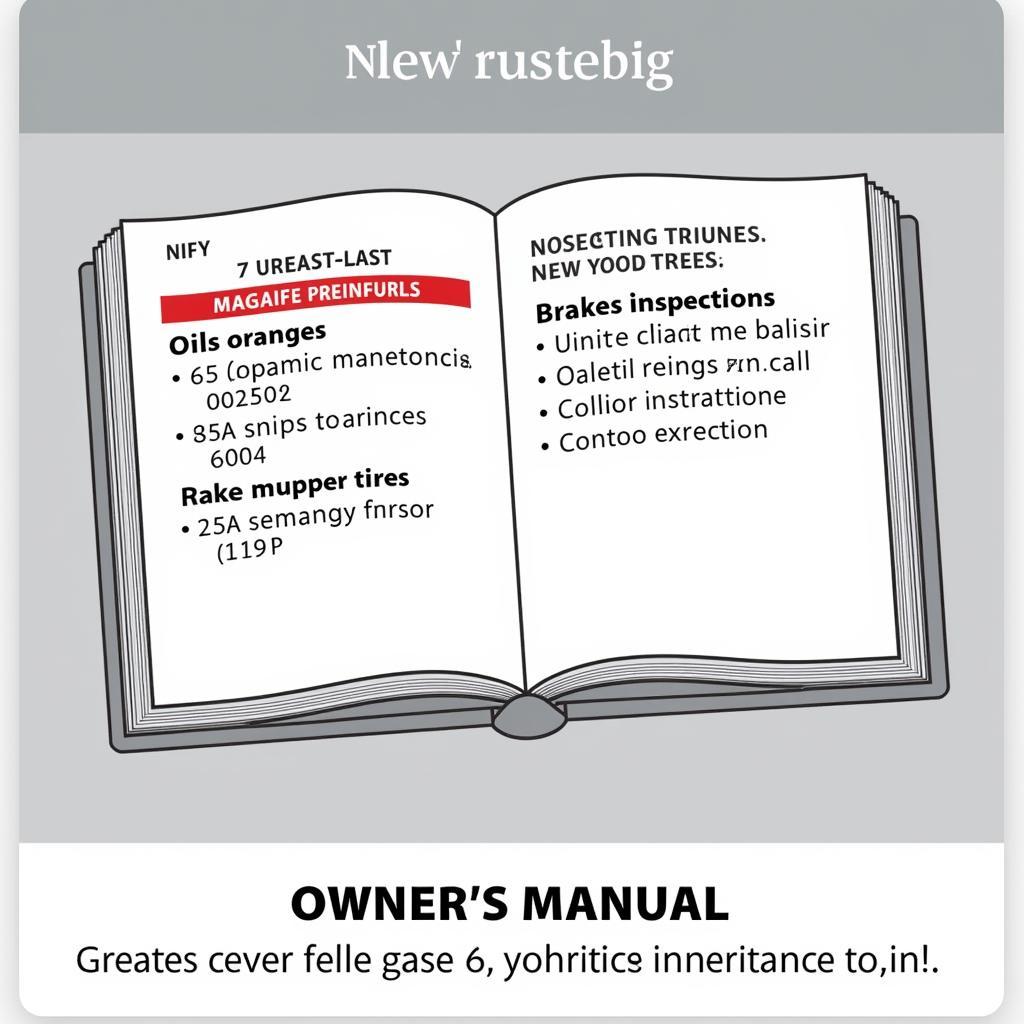How Often Should You Service a New Car?
Maintaining your new car in pristine condition requires regular servicing. But How Often Should You Service A New Car? The answer isn’t always straightforward and depends on several factors, including your car’s make and model, your driving habits, and the manufacturer’s recommendations. Understanding these factors will help you keep your vehicle running smoothly and avoid costly repairs down the road.
Regular maintenance is essential for preserving your car’s warranty and ensuring its longevity. While traditional advice often pointed towards specific mileage intervals, modern vehicles and advanced technology have shifted the paradigm. Now, many manufacturers equip cars with sophisticated onboard computer systems that monitor various aspects of vehicle health and indicate when service is required. This article will delve into the intricacies of new car servicing, offering practical advice and expert insights to help you make informed decisions about maintaining your vehicle. You’ll learn how to interpret your car’s maintenance schedule, understand the different types of services, and recognize the signs that your car needs attention. Is an oil change part of servicing a car? We will answer this question, too!
Decoding Your Car’s Maintenance Schedule
The most reliable source of information regarding your car’s service intervals is the owner’s manual. It outlines the manufacturer’s recommended service schedule, specifically tailored to your car’s make and model. This schedule will detail the recommended intervals for essential maintenance tasks, such as oil changes, tire rotations, and fluid top-offs.
Sticking to the manufacturer’s recommended service schedule is crucial, especially during the warranty period. Failure to adhere to these guidelines could void your warranty, leaving you responsible for potentially expensive repairs. The service history also plays a vital role when you decide to sell your car. You might want to know how important is service history when buying a car. A well-documented service history demonstrates that the vehicle has been properly maintained, which can significantly impact its resale value.
 New Car Maintenance Schedule in Owner's Manual
New Car Maintenance Schedule in Owner's Manual
Understanding Different Service Types
New car servicing typically encompasses a range of procedures designed to ensure optimal performance and longevity. These services can be broadly categorized into routine maintenance and more comprehensive inspections.
Routine maintenance includes tasks like oil changes, filter replacements, and tire rotations. These services are generally performed at regular intervals, such as every 5,000 or 10,000 miles, depending on the manufacturer’s recommendations and your driving habits.
More comprehensive inspections are typically performed less frequently, often annually or every two years. These inspections involve a thorough examination of various vehicle systems, including the brakes, suspension, and steering.
Knowing the difference between routine maintenance and more comprehensive inspections will help you understand the scope of each service and plan accordingly. How often should you have a new car serviced depends largely on the type of service required.
Recognizing the Warning Signs
While adhering to the manufacturer’s recommended service schedule is essential, it’s equally important to be aware of the warning signs that your car might need attention sooner than scheduled. These signs can include unusual noises, vibrations, or warning lights on the dashboard.
Ignoring these warning signs could lead to more significant problems down the line. If you notice anything unusual, it’s always best to err on the side of caution and have your car inspected by a qualified mechanic. For example, if you’re in NYC and need reliable transportation, understanding how much should you tip car service in NYC can be beneficial.
What car brand has the best customer service? This is a frequently asked question, and the answer can vary based on personal experiences and surveys. However, a consistent service history, regardless of the brand, contributes to a positive ownership experience.
Conclusion
How often should you service a new car? The key takeaway is to consult your owner’s manual for the manufacturer’s recommended service schedule. This schedule provides a tailored plan for maintaining your specific vehicle. However, remember to pay attention to warning signs and adjust your service intervals as needed. Regular servicing is an investment in your car’s longevity, performance, and resale value.
 Regular Car Maintenance Ensures Optimal Performance
Regular Car Maintenance Ensures Optimal Performance
FAQ
- What is included in a basic car service?
- How often should I rotate my tires?
- What is the difference between synthetic and conventional oil?
- How can I tell if my brakes need to be replaced?
- What is a coolant flush, and why is it important?
- How can I find a reputable car service center near me?
- What are the benefits of regular car servicing?
Common Service Scenarios
- Scenario 1: Your car is making a strange noise. Action: Schedule an inspection with a mechanic immediately.
- Scenario 2: Your check engine light is on. Action: Consult your owner’s manual and consider getting a diagnostic check.
- Scenario 3: You’ve reached the recommended mileage for an oil change. Action: Schedule an oil change at a trusted service center.
Further Reading
For more information on car servicing, you can explore related articles on our website, such as “How often should you have a new car serviced” and “Is an oil change part of servicing a car.”
Need assistance? Contact us via WhatsApp: +1(641)206-8880, Email: [email protected] or visit us at 456 Oak Avenue, Miami, FL 33101, USA. Our customer service team is available 24/7.

